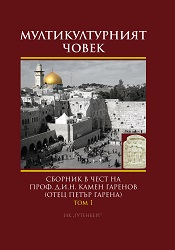Употребата на етникони в тракийските земи
Ethnicon usage in Thracian lands
Δεντου-/ Dentu- or -δενθης/-dentes
Author(s): Georgi Mitrev
Subject(s): History, Language studies, Language and Literature Studies, Cultural history, Comparative history, Ethnohistory, Ancient World, South Slavic Languages
Published by: Издателска къща "Гутенберг"
Keywords: Thrace; morpheme; morphology; ethnicons; Ancient Greece; Macedonia; Balkan history; History;
Summary/Abstract: As names and part of the system of names, ethnicons are characteristics for both ancient and contemporary societies. In the world of Ancient Greece where two names were used traditionally at the presentation of citizens, their given and their paternal names, these names complement the information about the origin of the persons which are also indicative of their native land. With the gradual establishment of Greek settlers in various parts of Thrace, after the age of antiquity these traditions also infiltrated Thracian territories.
In the time of the Roman emperors, rising monuments with inscriptions spread among broader strata of the Thracian provincial population in Macedonia, Thrace, Moesia, Dacia, Bithynia and elsewhere. In these conditions, epigraphic heritage also began to include elements and influences coming from the living Thracian language. Against the backdrop of those processes and in relation to the different factors necessitating the use of ethnicons or other similar means to present origins, we see a tradition that is characteristic of Thracians and the Thracian language. The ethnicons that have reached to us are such that can be linguistically defined as Thracian in origin. The sources show that the Thracians also had their tradition in the use of ethnicons based on a model typical of their language. Those were twofold names with first or second root Dentu- or -dentes.
- Page Range: 587-597
- Page Count: 11
- Publication Year: 2016
- Language: English, Bulgarian
- Content File-PDF

